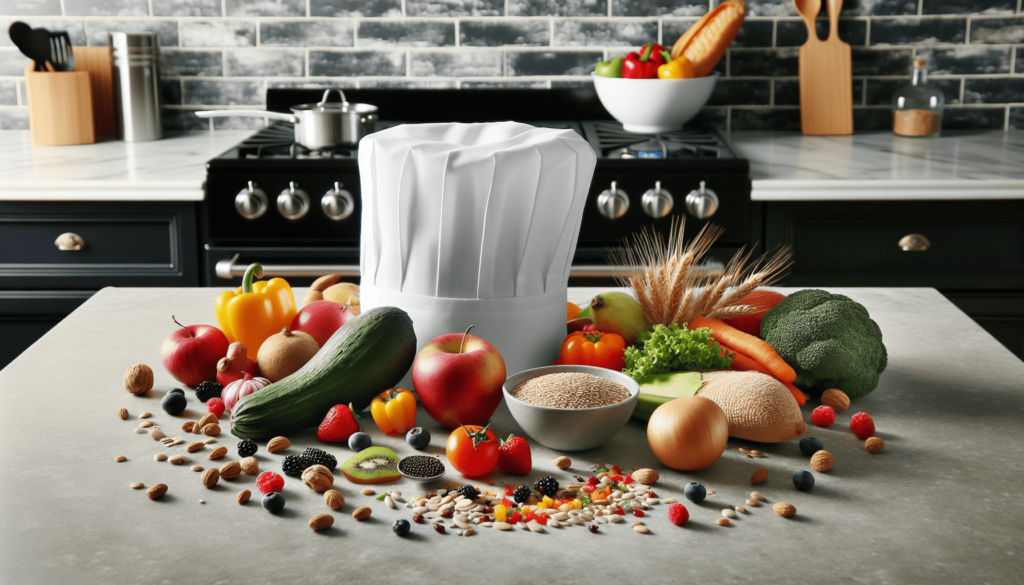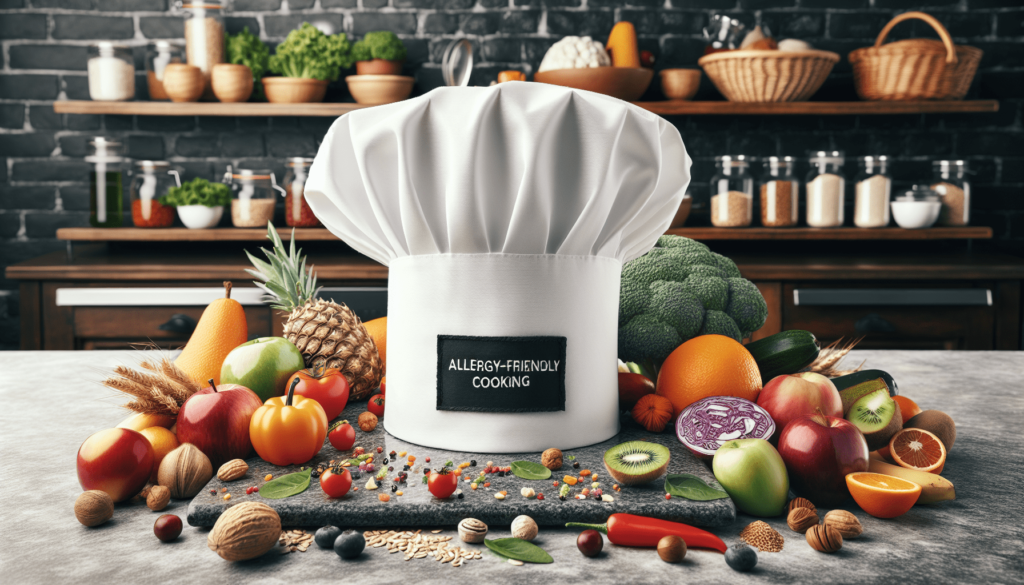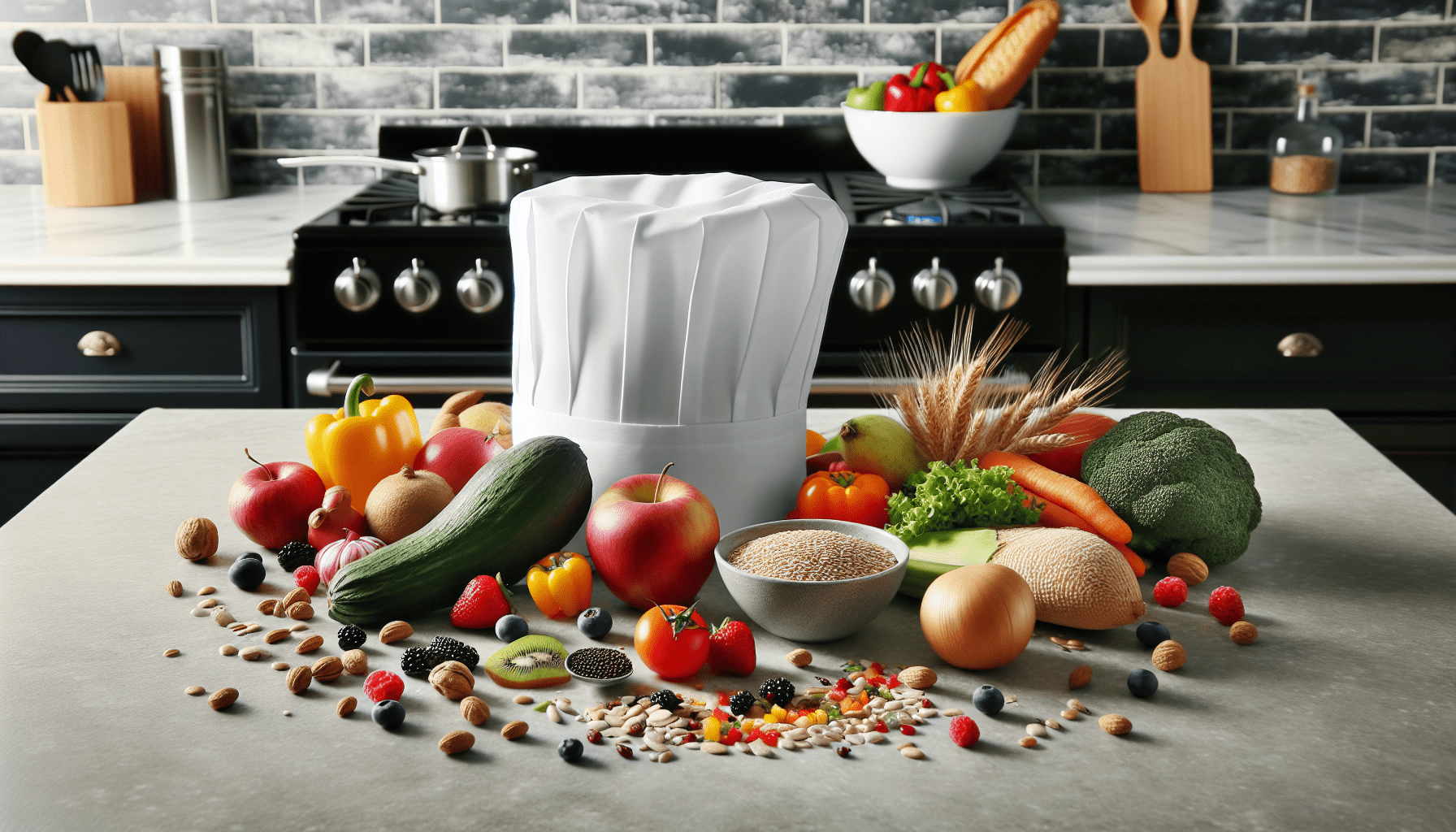Welcome to the ultimate Guide to Food Allergy-Friendly Cooking Classes! In this enlightening guide, you’ll discover how to master the art of delicious, allergen-free cuisine, ensuring that your meals are both safe and scrumptious. You’ll find expert tips, essential resources, and top-notch classes, all designed to help you navigate the world of cooking with food allergies. Whether you’re cooking for yourself or a loved one, this guide will empower you to create culinary masterpieces that everyone can enjoy, without the fear of allergic reactions. Have you ever found yourself dodging delicious dishes because of food allergies, either for yourself or someone you love? If so, you’re not alone. With the prevalence of food allergies on the rise, many people are seeking out food allergy-friendly cooking classes to hone their skills in creating safe and delicious meals. This guide is here to help you navigate the world of food allergy-friendly cooking classes, so you can cook with confidence and creativity.
Why Consider Food Allergy-Friendly Cooking Classes?
Whether you’re new to cooking or a seasoned chef, food allergy-friendly cooking classes can offer a multitude of benefits. These classes don’t just teach you how to cook; they empower you with the knowledge to manage and adapt recipes to fit specific dietary needs.
The Rise of Food Allergies
Food allergies have become more common in recent years, affecting millions of people worldwide. Common allergens include milk, eggs, peanuts, tree nuts, soy, wheat, fish, and shellfish. Given this, it’s no wonder why the demand for food allergy-friendly options has surged.
Learning to Adapt
Food allergies often require substitutes and adaptations in recipes. A class can teach you how to make these modifications without compromising the taste or texture of your dishes. Knowing how to properly substitute ingredients ensures that your cooking remains both safe and enjoyable.
Building Confidence
There’s an extra layer of caution and fear when cooking for someone with a food allergy. A cooking class designed with allergies in mind can offer reassurance. Such classes provide the knowledge you need to avoid cross-contamination and ensure that meals are genuinely allergy-friendly.
What to Look for in a Food Allergy-Friendly Cooking Class
Not all cooking classes are created equal, and this is especially true for those that focus on food allergies. Here’s what to look for to ensure you’re getting the best possible experience.
Expertise of Instructors
The credibility and experience of the instructors are paramount. Look for classes taught by professional chefs who have specialized training in food allergies or have credible certifications.
Hands-On Learning
Hands-on experience is invaluable. The best way to learn is by doing, and classes that offer practical, hands-on opportunities to cook will help you internalize the techniques and remember them better.
Inclusive Curriculum
Look for classes that cover a range of allergens and offer multiple recipes and techniques. This ensures you gain knowledge about managing a variety of food allergies, not just one.
Small Class Sizes
Smaller class sizes often mean more personalized attention from the instructor. This is particularly important when learning something as nuanced as allergy-friendly cooking.
Positive Reviews
Check online reviews and testimonials from past students. Positive feedback is a good indicator that the class delivers on its promises.

Popular Food Allergy-Friendly Cooking Classes
Now that you know what to look for, let’s dive into some popular cooking classes that cater to food allergy needs.
Local Community Classes
Many local community centers and culinary schools offer food allergy-friendly cooking classes. These can be a great way to start, especially if you prefer in-person learning.
Local Community Centers
Often more affordable and closer to home, community centers frequently offer specialized cooking classes. These courses are usually beginner-friendly and cover a wide range of allergens.
Online Platforms
If you prefer the flexibility of learning from home, various online platforms offer excellent allergy-friendly cooking courses.
| Platform | Key Features | Price Range |
|---|---|---|
| Udemy | Wide range of courses, user reviews, self-paced | $20 – $100 |
| MasterClass | High-quality video lessons from top chefs | $90 – $180/year |
| Skillshare | Numerous classes, community support, monthly fee | $15/month |
Specialized Institutes
Some culinary institutes focus exclusively on allergy-friendly cooking. These institutes often offer comprehensive programs and certificates.
Culinary Institutes
For a more formal education in allergy-friendly cooking, consider enrolling in a specialized culinary institute. These schools often offer more in-depth courses, sometimes leading to certifications.
Tips for Getting the Most Out of Your Cooking Classes
Making the most of your cooking class requires some preparation. Here are some tips to help you maximize your learning experience.
Do Your Homework
Read up on the topic before attending your class. Familiarize yourself with common substitutes and basic cooking techniques related to food allergies.
Take Notes
Come prepared with a notebook or a device to take notes. Jotting down tips, tricks, and recipes will help you remember what you’ve learned.
Ask Questions
Don’t be afraid to ask questions. The more you engage with your instructor, the more you’ll learn. Remember, there are no stupid questions when it comes to ensuring food safety.
Practice at Home
The best way to solidify your new skills is by practicing at home. Try out the recipes and techniques you learned in class to gain confidence.

Must-Have Ingredients for Allergy-Friendly Cooking
Having the right ingredients on hand can make food allergy-friendly cooking much easier. Here are some must-haves for your pantry.
Alternative Flours
Gluten is a common allergen, so stock your pantry with alternative flours.
| Type | Best For |
|---|---|
| Almond Flour | Baking, pancakes, bread |
| Coconut Flour | Baking, thickening, breading |
| Rice Flour | Stir-fries, baking, thickening |
| Oat Flour | Baking, pancakes, cookies |
Dairy Substitutes
Milk and dairy products are another common allergen. Here are some alternatives.
| Type | Uses |
|---|---|
| Almond Milk | Smoothies, baking, cooking |
| Coconut Milk | Curries, soups, baking |
| Oat Milk | Coffee, baking, sauces |
| Soy Milk | Baking, cooking, smoothies |
Egg Replacements
Replacing eggs can be a challenge but certainly not impossible.
| Substitute | Best For |
|---|---|
| Applesauce | Baking (1/4 cup per egg) |
| Flaxseed Meal | Baking (1 tbsp meal + 3 tbsp water = 1 egg) |
| Chia Seeds | Baking (1 tbsp seeds + 3 tbsp water = 1 egg) |
| Commercial Egg Replacer | General use |
Nut Substitutes
For those with nut allergies, it’s vital to have safe alternatives.
| Substitute | Uses |
|---|---|
| Sunflower Seeds | Snacks, baking, granola |
| Pumpkin Seeds | Salads, baking, snacks |
| Hemp Seeds | Smoothies, salads, baking |
Food Allergy-Friendly Recipes to Try
Trying out new recipes is the best way to practice your food allergy-friendly cooking skills. Here are a few starter recipes that are sure to delight.
Gluten-Free Banana Bread
Ingredients
- 2 cups almond flour
- 3 ripe bananas, mashed
- 2 eggs (or 2 tbsp flaxseed meal + 6 tbsp water)
- 1/4 cup maple syrup
- 1 tsp vanilla extract
- 1 tsp baking soda
- 1 pinch salt
- 1/2 tsp cinnamon
Instructions
- Preheat your oven to 350°F (175°C).
- In a large bowl, combine the mashed bananas, eggs (or flax eggs), maple syrup, and vanilla extract.
- Add the almond flour, baking soda, salt, and cinnamon to the wet ingredients. Mix until well combined.
- Pour the batter into a greased loaf pan.
- Bake for 50-60 minutes, or until a toothpick inserted into the center comes out clean.
- Let it cool before slicing and serving.
Dairy-Free Alfredo Sauce
Ingredients
- 1/2 cup raw cashews, soaked for 2-3 hours
- 1 cup water
- 2 tbsp nutritional yeast
- 1 tbsp lemon juice
- 1 garlic clove
- 1/2 tsp salt
- 1/4 tsp pepper
Instructions
- Drain the soaked cashews and place them in a blender.
- Add the water, nutritional yeast, lemon juice, garlic, salt, and pepper.
- Blend until smooth and creamy.
- Heat the sauce in a pan over medium heat until warm.
- Serve over your favorite pasta.
Vegan Chocolate Chip Cookies
Ingredients
- 1 cup coconut oil
- 1 cup coconut sugar
- 2 flax eggs (2 tbsp flaxseed meal + 6 tbsp water)
- 1 tsp vanilla extract
- 3 cups gluten-free flour
- 1 tsp baking soda
- 1/2 tsp salt
- 1 cup dairy-free chocolate chips
Instructions
- Preheat your oven to 350°F (175°C).
- In a large bowl, beat the coconut oil and coconut sugar until creamy.
- Add the flax eggs and vanilla extract, and mix well.
- In a separate bowl, combine the gluten-free flour, baking soda, and salt.
- Gradually add the dry ingredients to the wet ingredients, mixing well.
- Stir in the dairy-free chocolate chips.
- Drop spoonfuls of dough onto a baking sheet lined with parchment paper.
- Bake for 10-12 minutes, or until the edges are golden.
- Let the cookies cool before serving.
Conclusion
Understanding and embracing food allergy-friendly cooking is essential in today’s world. Whether you’re cooking for yourself, family members, friends, or even customers, knowing how to safely and deliciously prepare meals that accommodate food allergies is an invaluable skill. By taking specialized cooking classes and educating yourself about proper techniques and ingredient substitutes, you can ensure every meal is both safe and savory.
So, don’t hesitate to sign up for a class, experiment with new recipes, and transform your kitchen into an allergy-friendly haven. Happy cooking!
